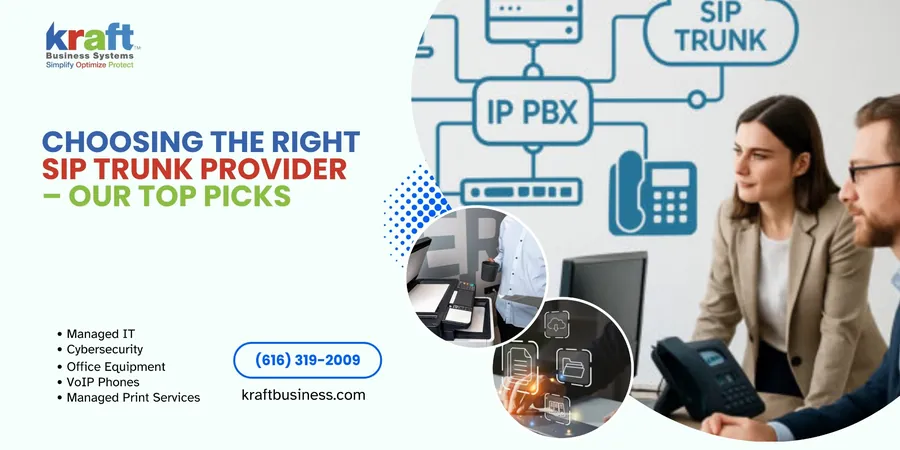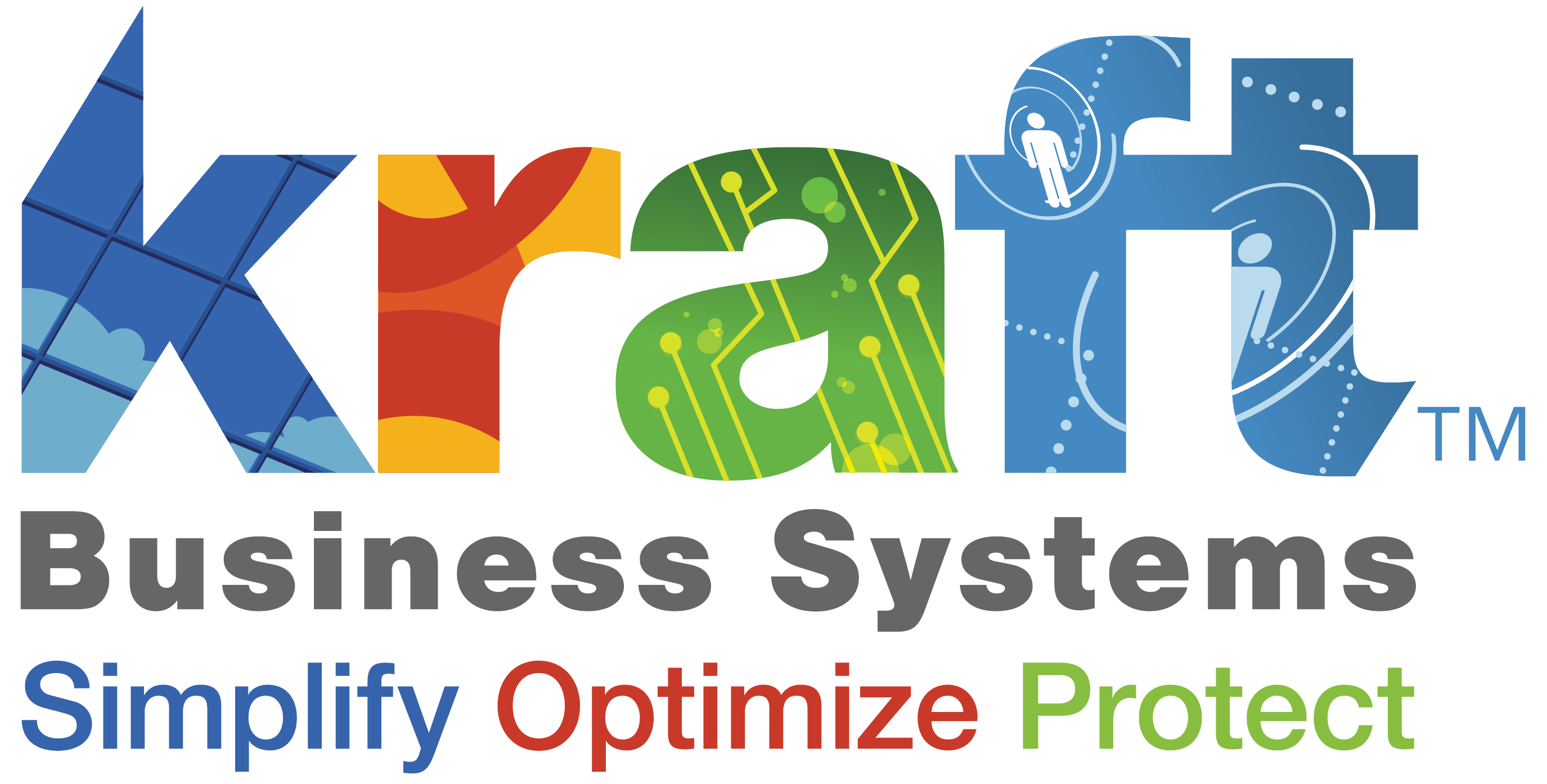Looking for reliable SIP trunk providers for your business? Here’s a quick overview of top providers based on reliability, features and business needs:
- Leading Provider A – Best for developers with API-first approach and global coverage in 100 countries
- Leading Provider B – Excellent for cost savings (up to 98% over traditional lines) with enterprise-grade security
- Leading Provider C – Ideal for reliability with 99.999% uptime and connected over 1 billion calls last year
- Leading Provider D – Top choice for business continuity with patented dynamic routing
- Leading Provider E – Perfect for resellers with white-label capabilities and no upfront costs
The days of traditional phone lines are quickly fading as businesses accept more flexible, cost-effective communication solutions. SIP trunk providers connect your existing phone system to the internet, replacing physical phone lines with virtual connections that offer greater scalability and significant cost savings.
SIP (Session Initiation Protocol) trunking transforms how businesses handle voice communications. Rather than maintaining expensive PRI circuits or analog phone lines, SIP trunking leverages your existing internet connection to deliver voice services with improved features and flexibility.
What makes this technology particularly appealing is its reliability. Leading providers celebrate an impressive 99.99% uptime over 15 years of service, ensuring your business communications remain uninterrupted even during network challenges.
With remote work becoming standard practice, businesses need phone systems that support distributed teams. SIP trunking enables employees to make and receive calls from anywhere while maintaining professional call quality and business phone numbers.
When selecting a SIP trunk provider, consider your specific needs:
- Call volume – How many simultaneous calls do you need to support?
- Geographic coverage – Do you need international numbers or just domestic service?
- Integration requirements – What existing PBX or unified communications platform will you connect?
- Scalability – How quickly might your needs grow or fluctuate?
- Security features – What encryption and fraud prevention measures are provided?
Moving to SIP trunking doesn’t mean abandoning your current phone system. Most providers support popular PBX systems including 3CX, Avaya, Cisco, Microsoft Teams, Mitel, and many others.
As more than 76% of customers still prefer phone calls when they need assistance, having a reliable voice communication system remains critical for business success. The right SIP trunk provider ensures you meet this need while gaining flexibility and reducing costs.
Sip trunk providers vocab explained:
What Is SIP Trunking & How It Works
Think of SIP trunking as your business phone system’s gateway to the internet age. Instead of those clunky physical phone lines running into your building, SIP (Session Initiation Protocol) lets your voice calls travel over the same internet connection you’re already paying for.
SIP trunking works through two main components working together seamlessly:
- Signaling – The SIP protocol handles all the behind-the-scenes work of setting up calls, managing them while in progress, and properly ending them
- Media – Once a call connects, the Real-Time Transport Protocol (RTP) carries your actual voice data back and forth
Your business phone system (IP PBX) connects to your SIP trunk provider’s network through the internet. The provider then links you to the regular phone network (PSTN) through their gateway. This creates a bridge between your modern internet-based system and the traditional phone world – letting you call anyone, anywhere.
For your calls to sound crystal clear, you’ll need:
- Enough bandwidth (plan for about 100 Kbps per simultaneous call)
- Quality of Service (QoS) settings that tell your network to prioritize voice data
- Compatible codecs like G.711 for standard calls or G.722 for HD voice quality
Basic Call Flow
When you make a call through SIP trunking, here’s what happens behind the scenes:
Your desk phone sends an INVITE packet to your SIP trunk provider when you dial a number. This digital handshake requests a connection. Your provider routes this request either to another internet-based phone or through the gateway to a traditional phone. Once the person you’re calling picks up, a session establishes between both endpoints, and your conversation flows as voice data packets. When either person hangs up, a BYE message ends the session cleanly.
Before any of this magic happens, your system must register with your SIP trunk provider. This security process involves authenticating your PBX with unique credentials, registering your network information, and setting up any encryption if you’re using secure connections (which we highly recommend).
Benefits Over Legacy Lines
Switching from old-school phone lines to SIP trunking brings some serious advantages for Michigan businesses:
Cost Savings are typically 30-60% compared to traditional phone service. You’ll eliminate expensive PRI circuits, dramatically reduce long-distance charges, combine voice and data onto one network, and only pay for the capacity you actually need.
Scalability becomes effortless with SIP. Traditional PRI lines force you into blocks of 23 channels per circuit – whether you need them or not. With SIP trunk providers, you can add or remove capacity on demand, easily handle seasonal spikes, and never pay for unused lines.
Multi-Site Unification transforms how businesses with multiple locations communicate. You’ll enjoy centralized management of all voice services, free internal calling between offices, consistent features everywhere, and the simplicity of dealing with just one provider.
Disaster Recovery gets a major upgrade with SIP trunking. Your phone system gains automatic failover to backup data centers, quick number redirection during emergencies, geographic redundancy, and call continuity even when your main office faces problems.
For businesses across Michigan from Grand Rapids to Detroit, IP PBX and SIP Trunking solutions create the foundation for communications systems that are not just modern and resilient, but ready to grow alongside your business.
Key Criteria When Comparing SIP Trunk Providers
When shopping for SIP trunk providers, certain factors matter more than others. Finding the right fit for your business means looking beyond just price to ensure you’re getting reliability, security, and the features your team needs.
Reliability & Uptime Targets When Selecting sip trunk providers
Your phone system is often the lifeline of your business. When customers can’t reach you, opportunities vanish. That’s why reliability should top your list when evaluating SIP trunk providers.
The best providers maintain multiple data centers spread across different geographic regions. This isn’t just fancy tech talk – it means if one location faces issues (think storms, power outages, or equipment failures), your calls automatically route through another center without missing a beat. Some premium providers operate five completely separate data centers, each running at just 15% capacity to ensure smooth sailing even during the busiest times.
Automatic failover is another must-have feature. Think of it as your phone system’s insurance policy. When network hiccups occur, systems like Flowroute’s HyperNetwork™ instantly detect the problem and reroute your calls behind the scenes – no manual intervention needed.
You’ll also want access to clear monitoring tools. Transparent providers offer real-time dashboards showing network status, historical uptime records, and voice quality metrics. These tools help you spot potential issues before they impact your business.
The gold standard for uptime is 99.999% – known as “five nines” reliability. That translates to less than five minutes of downtime annually. For perspective, Nextiva’s network successfully connected over a billion calls last year, showing what truly reliable service looks like.
Pricing Models sip trunk providers Offer
When it comes to pricing, SIP trunk providers offer several approaches to fit different business needs:
Per-Channel Pricing works like traditional phone lines – you pay for a specific number of simultaneous call paths. This straightforward approach works well when your call volume is consistent and predictable.
Per-Minute billing charges only for the time you actually use. For businesses with irregular call patterns or seasonal spikes, this pay-as-you-go model often saves money.
Burstable Channels give you flexibility to exceed your normal channel count during busy periods. You’ll pay extra only for those additional channels when needed – perfect for handling occasional call surges without overpaying year-round.
Unlimited Seats packages offer flat-rate pricing for unlimited domestic calling. While potentially more expensive for low-volume users, they make budgeting simple and predictable.
The trend among providers is moving toward more flexible, no-contract options. This shift gives businesses the freedom to adjust their service as needs change, without being locked into long-term commitments.
Security & Compliance Checklist
Phone security isn’t optional anymore, especially if your business handles sensitive information. Here’s what to look for:
Transport Layer Security (TLS) encrypts all the signaling information for your calls, preventing eavesdropping and keeping your communications secure from end to end.
Secure Real-time Transport Protocol (SRTP) goes a step further by encrypting the actual voice data. This ensures your conversations remain private, even if someone manages to intercept the data packets.
Kari’s Law & Ray Baum Act Compliance isn’t just good practice – it’s the law. These regulations ensure direct 911 dialing and accurate location information transmission to emergency services.
E911 Service provides precise location details to emergency responders. This becomes especially critical for businesses with multiple locations or remote workers.
Fraud Mitigation tools protect your business from unexpected charges. Look for providers offering automated toll fraud protection, unusual activity monitoring, and customizable security settings.
Depending on your industry, you might need specific regulatory compliance features. Healthcare organizations need HIPAA-friendly solutions, retailers processing payments need PCI DSS compliance, and companies handling European customer data need GDPR-compliant systems.
At Kraft Business Systems, we help Michigan businesses from Grand Rapids to Detroit find the perfect balance of reliability, pricing, and security in their SIP trunking solutions. We understand that every business has unique communication needs, and we’re here to help you steer these options to find the perfect fit.
Our Top Picks by Business Need
Not all businesses need the same features from their SIP trunking service. After helping hundreds of Michigan companies upgrade their phone systems, we’ve identified which SIP trunk providers excel for specific business requirements:
Best for Rapid API Integration
Tech-savvy companies looking to build communications directly into their applications will appreciate providers with a developer-friendly approach. The best solutions in this category allow you to control every aspect of your phone system through code.
Look for self-service portals that make it easy to provision trunks, purchase numbers, and adjust settings without waiting for support tickets. Comprehensive RESTful APIs with excellent documentation let your developers automate everything from number provisioning to complex call routing logic.
What really sets top providers apart is real-time provisioning – changes take effect instantly. The best solutions in this category have earned industry recognition for their innovation. With coverage in over 100 countries, these providers are perfect for businesses with in-house development teams who want maximum control over their communications.
Best for Small & Growing Teams
Small businesses need phone systems that grow with them without breaking the bank. The best SIP trunk providers for growing teams offer flexibility without long-term commitments.
Look for metered plans where you only pay for what you use – no minimums or wasteful overprovisioning. Free number porting is another must-have, letting you keep your existing business numbers without extra fees. And perhaps most importantly, avoid contracts that lock you in before you know your true needs.
The ideal providers for small businesses offer quick self-service provisioning and no-contract models. Their systems work beautifully with popular small business phone systems like 3CX, FreePBX, and Asterisk – platforms we regularly implement for our Grand Rapids clients.
Best for Global Reach & Remote Work
If your team spans multiple countries or works remotely, you need a provider with global capabilities and mobile-friendly features.
International DIDs (direct inward dialing numbers) let customers reach you through local numbers in their countries, increasing answer rates and customer satisfaction. Look for providers with strategically placed data centers that minimize voice delay on international calls. And don’t forget mobile softphone support – essential for keeping remote workers connected through their smartphones.
The best global providers serve millions of users across hundreds of countries with impressive reliability (99.99% uptime over many years). Smart Caller ID features are particularly valuable, letting you choose between multiple caller IDs on the fly without complex PBX configuration.
Best for Mission-Critical Redundancy
For businesses where phone downtime means lost revenue or safety concerns, redundancy isn’t optional – it’s essential.
The most reliable SIP trunk providers maintain documented 100% uptime records and operate multiple geographically dispersed data centers. They also maintain relationships with multiple upstream carriers, creating alternate paths when problems arise.
Top providers in this category have achieved impressive multi-year 100% uptime through hyper-redundant approaches. They operate multiple fully independent data centers, each running at under 15% capacity so they can instantly absorb traffic if others experience issues. For healthcare providers, emergency services, and financial institutions across Michigan, this level of reliability provides essential peace of mind.
Best for Resellers & MSPs
If you’re a managed service provider or reseller, you need special features to support your business model and clients.
White-label portals let you present a customized interface with your branding. Automated end-user billing systems handle the complex calculations of taxes and usage charges. And multi-tenant management tools allow you to organize and support numerous customers from a single dashboard.
The best reseller-focused providers offer simple control panels for fast provisioning, while flexible subscription options mean no long-term contracts for you or your clients. Their platforms can help end customers save up to 60% on telecom costs while you maintain healthy margins.
At Kraft Business Systems, we’ve helped organizations throughout Michigan – from small businesses in Grand Rapids to multi-site operations across Detroit, Lansing, and beyond – find their perfect SIP trunk provider match. We consider your specific needs, growth plans, and existing infrastructure to recommend the ideal solution.
Smooth Setup & Number Porting Guide
Switching to a new SIP trunk provider shouldn’t give you headaches. We’ve helped countless Michigan businesses make this transition, and I’m happy to share our practical guide to ensure your setup and number porting goes without a hitch.
Step-by-Step Deployment
Before diving in, let’s make sure your network is ready for SIP trunking. Start with a thorough network assessment to confirm you have enough bandwidth (you’ll need at least 100 Kbps per simultaneous call). Check that your router supports Quality of Service settings, identify any potential bottlenecks, and run stability tests on your current internet connection.
Your firewall settings play a crucial role in successful SIP trunk deployment. You’ll need to allow SIP traffic (typically through ports 5060/5061) and permit RTP media streams (usually ports 10000-20000). Here’s a tip many IT folks miss: disable the SIP Application Layer Gateway (ALG) feature on your router. Despite its helpful-sounding name, it often creates more issues than it solves!
Next comes PBX configuration. You’ll enter your SIP trunk provider’s server details, set up your authentication credentials, and establish your call routing preferences. This is where the magic happens – connecting your phone system to the outside world through the internet rather than traditional phone lines.
Before moving your actual business numbers, run thorough testing. Make calls to different types of numbers (mobile, landline, international if needed), verify your caller ID displays correctly, and carefully evaluate call quality. Better to catch issues now than after you’ve ported your numbers!
The number porting process itself requires some patience and preparation. You’ll need to submit a Letter of Authorization (LOA) along with a recent phone bill for verification. Keep your service with your current provider active until the porting completes – typically a 7-14 day process. We usually recommend scheduling porting during low-traffic periods to minimize any potential disruption.
Don’t forget about E911 configuration – it’s not just good practice, it’s the law. Register accurate physical addresses for each number, update locations whenever phones move, and verify compliance with Kari’s Law and Ray Baum Act requirements. This ensures emergency services can find you if the unthinkable happens.
During the transition period, temporary call forwarding can be your best friend. Forward existing numbers to temporary numbers on your new system according to a planned migration schedule. This strategy helps minimize disruption, though you should prepare for potential brief service gaps during the actual porting.
For businesses throughout Michigan, from Grand Rapids to Detroit, our team at Kraft Business Systems provides hands-on guidance through each of these steps, ensuring your move to Cloud-Based VoIP happens smoothly and with minimal disruption.
Scaling & Ongoing Management
Once your SIP trunking solution is up and running, the day-to-day management becomes remarkably straightforward.
As your business grows, you might need additional capacity. Most SIP trunk providers make adding channels a breeze – you can monitor utilization through provider dashboards, add capacity during busy seasons, and scale back during slower periods to optimize costs. Many providers offer “burstable” options for handling unexpected call volume spikes without breaking the bank.
Take advantage of the analytics and reporting tools your provider offers. These insights help you track call patterns, monitor quality metrics, identify peak usage times, and generate reports for cost allocation. The data often reveals surprising patterns that can help you optimize your system.
Voice security deserves your attention too. Protect your system from toll fraud by setting spending limits and alerts, restricting international calling to necessary destinations only, monitoring for unusual call patterns, and implementing strong password policies. One client of ours once received a $7,000 bill from unauthorized international calls before implementing these safeguards!
Don’t forget to regularly test your disaster recovery capabilities. Simulate connection failures, verify that automatic rerouting works as expected, update your emergency response procedures, and document recovery processes. When (not if) something goes wrong, you’ll be glad you practiced.
For voice solutions that grow alongside your business, our Business Hosted Voice services provide the flexibility and reliability Michigan businesses need to stay connected, regardless of what challenges come your way.
Frequently Asked Questions about SIP Trunks
How many SIP channels does my business need?
Figuring out the right number of SIP channels doesn’t have to be complicated. Think of each channel as a phone line that allows one concurrent call – getting this number right means balancing cost with ensuring your team never hears busy signals.
Start by looking at your current call patterns. Most SIP trunk providers offer analytics tools that show how many simultaneous calls your business typically handles during peak times. This real-world data gives you the most accurate starting point.
The classic rule of thumb in the industry is the 3:1 ratio – one SIP channel for every three to four employees for general business use. But your specific needs might differ significantly based on your type of business. A busy insurance office handling claims might need more channels than a manufacturing facility with the same number of employees.
Business type matters significantly:
- Call centers need nearly a 1:1 ratio (one channel per agent)
- Standard offices can often function well with the 3:1 ratio
- Retail locations typically need just 2-3 channels regardless of staff size
Always plan for growth by adding about 15-20% capacity beyond your current requirements. This buffer prevents scrambling to add channels during unexpected busy periods.
Here in Michigan, we’ve seen businesses from small shops to large enterprises benefit from flexible channel options that allow scaling up during seasonal peaks (think tax season for accountants or holiday rushes for retailers) and scaling back during quieter times.
Can I keep existing phone numbers when switching?
Absolutely! Keeping your existing phone numbers is not only possible – it’s standard practice through a process called number porting. Your business has likely built its identity around these numbers, and SIP trunk providers understand this completely.
The porting process follows these straightforward steps:
- Sign up with your new provider
- Complete a Letter of Authorization (LOA)
- Provide a copy of your recent phone bill for verification
- Your new provider submits the porting request
- Continue using your current service until the port completes
- On the scheduled port date, service transfers seamlessly
Most local numbers take about 7-14 days to port. During this transition period, many providers offer temporary numbers so you can start using your new service while waiting for your permanent numbers to transfer.
The golden rule of porting: never cancel your existing service until the porting process is complete! Doing so could result in losing your numbers permanently.
While the process is usually smooth, certain specialty numbers (like some toll-free patterns) may take longer to port. Rural numbers sometimes have additional requirements too. Make sure to verify that all your numbers are included in the porting request – it’s easy to miss extensions or less-used lines.
Many SIP trunk providers now offer free number porting as a standard feature, eliminating what used to be an extra expense in the switching process.
What Equipment Is Required for SIP Trunking?
The beauty of SIP trunking is that it requires minimal hardware, especially if you’re already using modern network equipment. Here’s what you’ll need to get started:
Compatible PBX System: This is the heart of your phone system. You can use an IP PBX (like 3CX, Asterisk, or Avaya IP Office), convert a traditional PBX with an IP gateway, use a cloud-based PBX system, or even integrate with Microsoft Teams using Direct Routing.
Quality Router with QoS Support: Not all internet connections are created equal when it comes to voice traffic. A business-grade router with Quality of Service (QoS) capabilities will prioritize your voice data over less time-sensitive traffic like email or file downloads. This ensures clear calls even when your internet connection is busy with other tasks.
Reliable Internet Connection: For crystal-clear calls, you’ll need adequate bandwidth (at least 100 Kbps per concurrent call), low latency (under 150ms), minimal jitter (under 30ms), and low packet loss (under 1%). Most modern business internet connections easily meet these requirements.
Conclusion
Choosing the perfect SIP trunk provider isn’t just a technical decision—it’s an investment in your company’s communication future. Throughout this guide, we’ve highlighted providers that shine in different areas, whether you need developer-friendly APIs, bulletproof reliability, or budget-friendly options that scale with your business.
The workplace has transformed dramatically in recent years, with remote and hybrid models becoming standard practice. SIP trunking perfectly complements this evolution, giving your team the freedom to maintain professional communications from anywhere. Your customers experience the same seamless service whether your staff works from the office, home, or a coffee shop.
The financial benefits remain impossible to ignore. Most businesses we work with save between 30-60% when switching from traditional phone systems. But the advantages go far beyond cost—you’ll gain features, flexibility, and future-proofing that legacy systems simply can’t match.
When making your final decision, reliability should top your priority list. Look for SIP trunk providers with transparent uptime statistics and redundant infrastructure that keeps you connected even when problems arise. Your system should scale easily as you grow, without requiring hardware overhauls or lengthy implementations.
Security features matter more than ever, protecting your voice data and preventing expensive toll fraud scenarios. The quality of technical support becomes crucial during those rare but inevitable technical hiccups—research provider reputations for responsive, knowledgeable assistance.
Finally, consider how smoothly the solution integrates with your existing systems. The best provider for you works harmoniously with your current technology stack while opening doors to new capabilities.
Here at Kraft Business Systems, we’ve guided countless Michigan businesses through this decision process. From our Grand Rapids headquarters, we’ve helped companies across the state implement SIP trunking solutions custom to their unique requirements. Our team understands the specific challenges Michigan businesses face and can recommend the provider that best fits your needs.
Whether you’re replacing aging PRI lines, bringing multiple locations under one communication umbrella, or simply looking to cut costs without sacrificing quality, the right SIP trunk provider can transform how your business communicates.
Ready to modernize your phone system? Explore our Cloud-Based Enterprise Phone Systems solutions and find how Kraft Business Systems can implement a reliable, cost-effective SIP trunking solution custom-built for your Michigan business.










